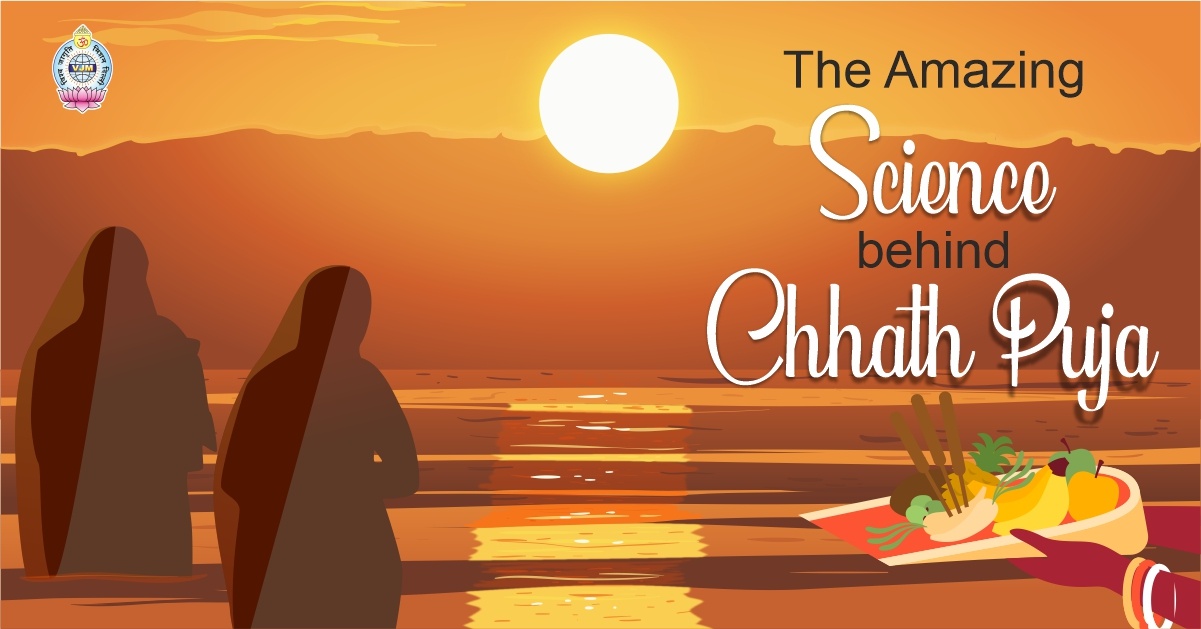The Amazing Science behind Chhath Puja | Sudhanshu Ji Maharaj
The Amazing Science behind Chhath Puja
Observe it deeply and you will find that the Chhath Puja, a highly significant festival for the North Indian states, is packed with a lot of scientific nuances.
Celebrated in the Holy Kartik month, the Chhath Puja festivities span across four days. The festival is observed to worship the Sun God and seek his blessings for the overall happiness of the family.
Devotees offer prayers to the Sun God, observe fast, take dips into the water of rivers and follow rituals related to eating that encourage prudence and self-restraint among Chatth Vratees.
Devotees have been advised to perform the rituals with all precautions as covid-19 situation is not over yet. So, stick to all the protocols (Sanitisation, Social Distancing, and Mask) and perform the Chhath Puja rituals.
The rituals blot out various scientific elements into them.
The Science behind Chhath Puja
- Chhath Puja rituals help in flushing out harmful bacteria and viruses from the body that prepares devotees for the onset of the winter season.
- In this month, many people start showing symptoms of allergy, cough, and cold. The Chhath Puja rituals help the human body get rid of toxicity that declines the impact of these symptoms.
- During the Puja, devotees take dips in water bodies and expose themselves to the Sun God. This increases the flow of solar energy boosting the overall function of the human body.
- The devotees stand in water. It rejuvenates their nervous system, giving them good health and a calm mind.
- Nowadays, Vitamin D deficiency is running like an epidemic in the country and Sun worship in Kartik month helps in the absorption of vitamin D. These Vitamins come from UVB rays that are predominant at the sunset and sunrise-the periods during which Puja is offered.
- Vitamin D is used for absorbing calcium from the food and all the food items and fruits used in this Puja are high in calcium like jaggery, pumpkin, orange, guava, and sugarcane, to name just a few.
- Vitamin D deficiency is linked to infertility and Kartik is known as the high fertility month. Perhaps that’s why it is believed that those seeking a child shall observe the Chhath Puja.
These points show how scientific our age-old customs and traditions are and the most amazing thing is that (according to legends) these rituals have roots in the Ramayan and Mahabharat period.
Legends Linked to Chhath Puja
Two legends are associated with the beautiful festival Chhath.
1. Legend Linked to Ramayana
It is believed that Lord Ram is behind the origin of Chhath Puja. On returning to Ayodhya after 14 years, Lord Ram and Mata Sita observed a fast in the honour of the Sun God and ended it at the break of dawn the next day.
The ritual subsequently evolved into the Chhath Puja that we see today.
2. Legend Linked to Mahabharata
It is believed that Daanveer Karna religiously offered his prayers while standing in the water and distributed Prasad among the needy.
It is also believed that Draupadi and the Pandavas performed a Puja similar to Chhath puja to win their lost kingdom back.
Perhaps that is why age-old rituals and the Chhath Puja are inseparable.
Chhath Puja Rituals
Day 1: Nahaye Khaye
Devotees do not eat food before taking a bath. They prepare Kaddu ki Sabji, pudding, Chane ki Daal among others, and eat that like prasad.
Day 2: Kharna
Devotees observe fast till the Kharna puja ends. After that, a blend of jaggery-laden pudding and puris are offered as Bhog to the Gods and distributed among the Vratees.
Day 3: Pehla Arghya
Devotees observe a complete fast. The auspicious day is marked with sweet folk songs and taking dips in the holy waters that go on till the sunsets.
Day 4: Doosra Arghya/Paaran
Devotees break their fast after offering prayers to the rising Sun and ask for blessings.
What beautiful rituals!
These look like simple rites, but they are not. A complete science is working behind them that keeps the devotees hale and hearty despite a rigorous fast.
This shows the sheer greatness of our culture and tradition.

